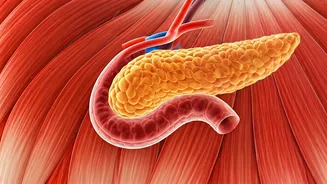Initial Weight Changes
When individuals embark on calorie reduction or increase their physical activity, the initial changes observed on the scale often reflect more than just
a decrease in fat. The early stages of weight loss include alterations in water levels, glycogen stores (stored carbohydrates), and sometimes a reduction in muscle mass. During the first few weeks of a diet, the majority of the weight lost is primarily water. As the body uses glycogen for energy, each gram of glycogen releases about three grams of water. This can lead to a significant weight decrease without any actual reduction in fat reserves. Furthermore, studies suggest that losing muscle during a diet can actually worsen blood sugar control. Muscle tissue is crucial for using glucose for energy; less muscle means less glucose uptake, which can elevate blood sugar levels over time. Consequently, while overall weight may decline, metabolic health might not necessarily improve.
Fat Loss Importance
While general weight loss is often discussed in relation to health, fat loss is the pivotal factor in boosting insulin sensitivity. Prioritizing fat reduction, especially around the abdomen and liver, leads to a noticeable improvement in how the body processes blood sugar. This approach helps the body regain its responsiveness to insulin, thus promoting better metabolic health in the long run. Focusing on fat reduction rather than the numbers on the scale is the path to long-term health improvements.
Visceral vs. Subcutaneous Fat
It's important to understand that not all body fat behaves in the same way. Subcutaneous fat, located just under the skin, is comparatively harmless. The real concern lies with visceral fat, which accumulates around the liver, pancreas, and intestines. Individuals with higher levels of visceral fat are two to three times more likely to develop insulin resistance than those with similar overall body fat but less visceral accumulation. Excess fat in the liver is particularly detrimental. When the liver stores too much fat, it continues to release glucose into the bloodstream even when blood sugar is already high, which worsens insulin resistance. Studies using MRI imaging have shown that reducing liver fat by just 25% can improve fasting glucose and HbA1c levels, even without significant changes in body weight. This explains why some people with a normal body weight can still develop type 2 diabetes—a condition sometimes referred to as 'metabolically obese normal weight' (MONW)—due to hidden visceral fat.
Effective Fat Loss
To effectively reduce fat and improve insulin sensitivity, it's crucial to concentrate on sustainable lifestyle changes rather than quick fixes. Extreme calorie restriction or rapid 'detox' plans can result in muscle loss, fatigue, and rebound weight gain. It's recommended to aim for a gradual fat loss of 0.5–1% of body weight per week through a combination of diet, exercise, and adequate recovery. Key strategies include incorporating strength and aerobic training. Resistance exercises help preserve muscle, while aerobic activities like walking, cycling, or swimming burn fat efficiently. Eating protein-rich foods preserves muscle mass and helps manage hunger. Focusing on balanced meals with fibre, healthy fats, and whole grains helps to stabilize blood sugar levels. Getting good sleep is also vital, as poor sleep increases insulin resistance and hunger hormones.
Benefits of Fat Loss
Fat loss specifically focuses on reducing adipose tissue, especially visceral fat surrounding the internal organs. This type of fat is strongly linked to insulin resistance, a condition in which cells don’t respond properly to insulin, causing the body to produce more. Research has shown that a 10% reduction in body fat can increase insulin sensitivity by nearly 30%, even when total body weight remains stable. This improvement occurs because shrinking fat cells release fewer inflammatory molecules and fatty acids, which interfere with insulin signaling. Fat loss also benefits mitochondrial function, allowing muscle cells to use glucose more efficiently. That's why even a modest reduction in fat, without dramatic weight loss, can lead to better blood sugar levels and improved energy balance.
Muscle Gain & Fat Loss
It is absolutely possible and often the healthiest approach to lose fat while maintaining or even gaining muscle. This can lead to improved insulin sensitivity and a stronger metabolism without significant changes on the scale. Combining resistance training with moderate calorie restriction improves blood sugar control more effectively than dieting alone. Muscle tissue acts like a sponge for glucose. The more muscle one has, the more efficiently the body can absorb and use sugar. By focusing on body composition rather than just weight, individuals can achieve lasting improvements in metabolic health. In practical terms, one might notice their clothes fitting better and energy levels increasing even if the scale remains steady.














